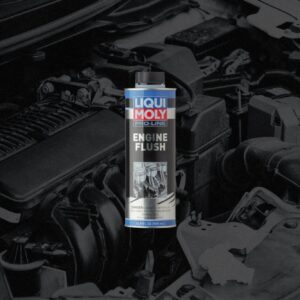More often than not, a smoking engine can point to two major problems: a leak in the engine or too much friction caused by moving engine parts.
Either way, smoke is a sign that there’s a serious problem that needs to be addressed immediately. Otherwise, you run the risk of your engine overheating and getting damaged.
Because of this, it’s a good idea to familiarize yourself with the meaning of different smoke colors, the most common causes, and whether it’s possible to drive with a smoking engine.
Does the Color of Engine Smoke Matter?

Yes, smoke color matters because it can help you pinpoint what’s causing the issue.
Typically, when smoke comes out of the engine, it’s either dark or white. Both are created when substances inside the engine burn, however, their smell and shade can vary depending on what’s burning.
Dark smoke typically indicates an oil leak, while light smoke coming from the engine indicates a coolant leak.
Dark Smoke
Typically, if there’s an oil leak in the engine, there’s a good chance that it can create dark smoke. When motor oil leaks onto hot engine components, it burns and creates thick, dark smoke that has a strong, distinct smell reminiscent of burning oil.
White Smoke
If there’s white smoke coming from the engine, there’s likely a coolant leak — a problem commonly caused by blown head gaskets or problems with the cooling system. When the coolant burns, it creates a sweet-smelling white smoke.
Common Causes of Smoking Engines
Keep an eye out for the problems that lead to smoking engines. Some of the most common causes include (but are not limited to) oil and coolant leaks, electrical problems, overheating engines, and burning contaminants.
Oil and Coolant Leaks
When oil and coolant leak into the engine, they can burn and create smoke when they come in contact with hot components. The color and smell of the smoke depend on what’s burned. Address this problem as soon as possible to avoid losing too much motor oil or coolant.
Electrical Problems
When the wires of electrical components inside the engine burn, typically as a result of an overheating engine, they can create smoke.
Overheating
Components such as gaskets and seals can burn, melt, and become misshapen because of an overheating engine. This problem is typically caused by moving parts generating too much friction, leading to damage that can potentially create smoke.
Burning Contaminants
Sometimes, foreign material can enter the engine. Moisture, debris, and other contaminants can accumulate and burn when driving, creating smoke. Because of this, it’s important to keep your engine clean at all times.
Can You Drive With a Smoking Engine?
Yes, if the issue didn’t render your vehicle inoperable, you can technically drive while the engine is smoking. However, that doesn’t mean you should, as you run the risk of further damaging your car.
Unless you’re confident you can drive to the nearest service center without destroying the engine, it’s best to pull over and stop driving as soon as you spot engine smoke. This minimizes the risk of your engine overheating and sustaining permanent, irreparable damage.
You can call roadside assistance or a towing service to bring your vehicle to the nearest mechanic and have them run diagnostics. There’s a good chance you’ll need to buy replacements for damaged or inoperative engine parts.
What if There’s Smoke Coming From the Engine but It’s Not Overheating?
Even if you’ve somehow confirmed that the source of the smoke isn’t due to overheating, it’s a bad idea to drive a vehicle with a smoking engine.
Smoke is a clear indicator that something is burning in your engine, which means a component is likely damaged or even inoperative. It’s a good idea to have your vehicle inspected by a professional if smoke comes out of places it shouldn’t.
Any information provided on this Website is for informational purposes only and is not intended to replace consultation with a professional mechanic. The accuracy and timeliness of the information may change from the time of publication.































